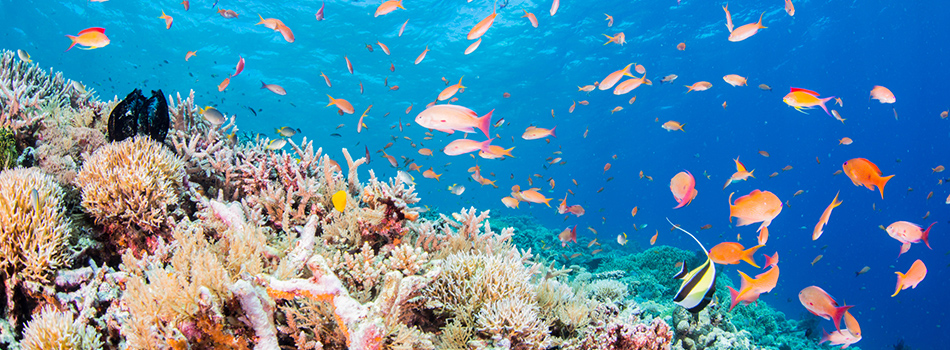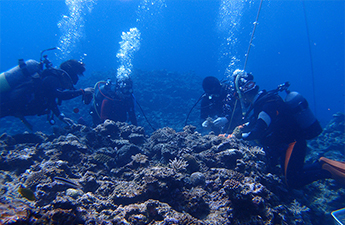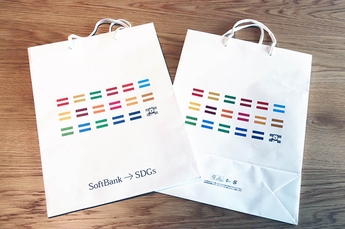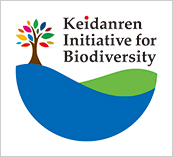Biodiversity Conservation


Corporate activities receive the benefits of ecosystem services provided by biodiversity and natural capital, while simultaneously impacting the environment in some way. Our Company recognizes the importance of biodiversity conservation and supports the international community's goal of achieving “Nature Positive.” We consider minimizing the impact of our corporate activities on ecosystems as one of our material issues and are committed to promoting initiatives aimed at achieving no net loss, including offset activities related to biodiversity conservation.
In order to ensure a sustainable planet with functioning ecosystems for future generations, we promote initiatives based on this policy within our business operations, and ask all of our suppliers (tier-1 and non tier-1) and business partners to cooperate with our biodiversity initiatives as well. We also engage with stakeholders to promote biodiversity conservation initiatives through business activities and social contribution activities.
Response to TNFD Recommendations

TNFD (Taskforce on Nature-related Financial Disclosures) is an international organization that establishes a framework for appropriately assessing and disclosing risks and opportunities related to natural capital and biodiversity. As a company adopting the TNFD's disclosure recommendations published in September 2023, we registered early as a TNFD Adopter in December 2023. Based on the disclosure framework outlined in the TNFD's recommendations, we are committed to proactive information disclosure.
Major initiatives
Protecting the marine
environment
through activities
to conserve coral

As part of our environmental conservation efforts which include measures to combat global warming and ecosystem maintenance, we launched the “Future and Coral Project” in July 2019 together with Onna Village in Okinawa Prefecture and many companies and organizations to plant coral and actively conserve the environment.
In order to protect the corals and maintain the future ecosystem of the planet, this project collects donations and purchases coral seedlings with such funds, arranges volunteer tours to plant those seedlings and activities to clean up nearby beaches, and disseminates information about coral growth, cooperating companies, and the activities of the organization.
The Sunshine Aquarium, which has been involved in coral conservation and research, has provided academic support since the project's inception, and we will continue to deepen our relationship.
Our Stance on Preventing Deforestation
We recognize the importance of biodiversity conservation and achieving zero deforestation, given the benefits we receive from ecosystem services provided by biodiversity and natural capital in our business activities. From the perspective of sustainable corporate management, we have established an ESG Promotion Committee as an advisory body to the Board of Directors, which bears ultimate responsibility for our overall sustainability activities under the supervision of the Board. To ensure a biodiverse and sustainable planet for future generations, we seek the cooperation of our suppliers and business partners, in addition to our own business operations.
[Targets]
- Implement forest conservation activities equivalent to an area more than twice the area of telecommunications facilities such as base stations installed in areas of Key Biodiversity Area by 2030, with FY2020 as the base year
- Promote the transition to a paperless environment and actively use certified paper
- Comply with applicable laws and regulations related to preventing of deforestation
- Participate in regionally and international important initiatives and cooperate with external experts
Mitigation of impacts associated with land development
To provide wide-ranging and stable communication services as part of social infrastructure, there are cases it is necessary to install communication facilities, such as base stations, in important biodiversity areas such as national parks, unavoidably.
As a biodiversity conservation target, we aim to implement forest conservation activities by FY2030 that cover an area more than double the size of the communication facilities, such as base stations, installed in Key Biodiversity Areas designated by national and international treaties, using FY2020 as the baseline year. This goal contributes to the prevention of deforestation and the regeneration of forests.
The area of telecommunication facilities, such as base stations, installed in Key Biodiversity Areas from FY2021 to FY2023 amounts to 1,706m2, and the area of forest conservation activities, such as tree planting, amounts to approximately 1,600m2.
Declaration of Zero Paper for Internal Operations
To promote paperless operations, we have declared a “Zero Paper Usage for Internal Operations” policy since April 2012. We have actively worked to reduce the use of paper in applications, reports, meeting materials, and other documents used for internal and external procedures. As a result, we have achieved a significant reduction of 90% compared to FY2011. Additionally, starting in April 2021, we have launched the ‘Electronic Seal Project’ aimed at improving operational efficiency and are striving to reduce the impact on deforestation.
Tree Planting Activities by Employees

We host the “Summer Vacation Parent-Child Nature School” with the cooperation of the “NPO CCC Furano Nature School” led by Mr. Sou Kuramoto. This program, aimed at employees and their children, focuses on themes such as “Building Healthy Parent-Child Relationships” and “Thinking about the Environment and Nature.”
Since its inception in 2007, more than 250 parents and children have participated in a total of seven programs related to the environment, including two of our original programs. We carry out future-oriented activities, such as removing the turf from golf courses and planting saplings in the soil to restore the land to its original forested state. Through these experiences, we aim to deepen the bonds between parents and children while providing opportunities to reflect on the current state of the Earth and consider what we can do for future environmental conservation.
Use of certified paper

All of the paper bags with our logo that our employees use for sales and other activities are made of recyclable materials. In addition to the elimination of plastic on the surface of the bags, plastic is also not used for the handles. The joints between the bags are also tied together without using any adhesives or fasteners. The paper is recyclable and certified by the Forest Stewardship Council® (FSC®), an international non-profit organization established to promote responsible forest management worldwide. For logo printing, we now use vegetable ink, which is biodegradable compared to petroleum-based solvents and contributes to a reduction in environmental impact with almost no emissions of volatile organic compounds.
Preventing deforestation and other environmental destruction through mobile phone recycling
Our core business products, such as mobile phones, batteries, and chargers, contain a variety of valuable resources, including rare metals (such as palladium and cobalt) as well as gold, silver, and copper. Rare metals are not only essential raw materials but are also difficult to substitute. New mining operations will have an impact on the biodiversity of the producing areas due to mine development and other factors. Since rare metals can be collected more efficiently through recycling than through mining, our Company promotes the collection and recycling of used mobile phones. By advancing recycling efforts, we contribute to preventing environmental destruction, such as deforestation from new mining activities.
Participation in initiatives
Joining the TNFD Forum.

We have endorsed the principles of the Task Force on Nature-related Financial Disclosures(TNFD), and have joined the TNFD Forum in May 2022. We will actively promote information disclosure based on the disclosure framework.
Participated in the Ministry of
the Environment's
30by30 Alliance for Biodiversity

Participated in the 30by30 Alliance for Biodiversity, a group of companies, local governments, NPOs, and others working to achieve the 30by30 goal of conserving 30% of land and sea by 2030.
Join the Japan Business Initiative
for Biodiversity (JBIB)

We are a network member of the Japan Business Initiative for Biodiversity (JBIB), a group of companies that are actively working to conserve biodiversity.
We will continue to engage in biodiversity conservation activities and promote activities that are consistent with global trends.
Endorsement of the
“Initiative based on the Declaration of
Biodiversity by Keidanren”


In addition to participating in the Keidanren Council on Nature Conservation, we endorse the aims of the “Declaration of Biodiversity by Keidanren” formulated by Keidanren, and have endorsed the “Initiative based on the Declaration of Biodiversity by Keidanren”.